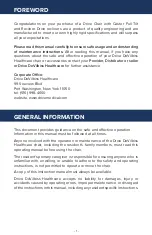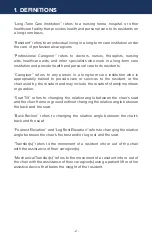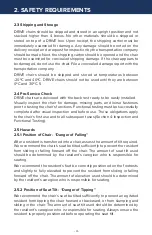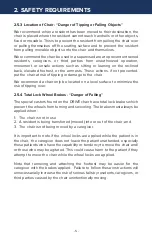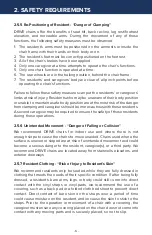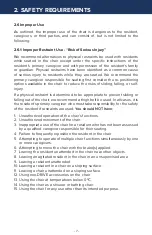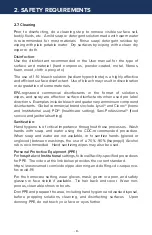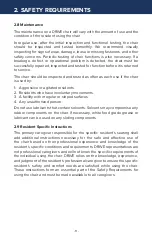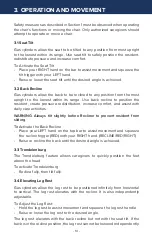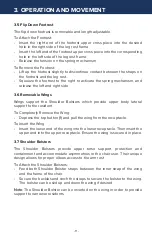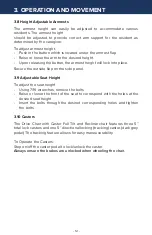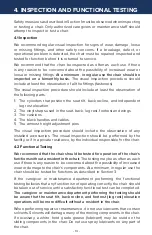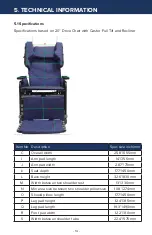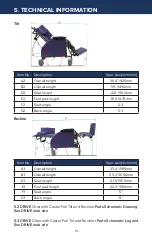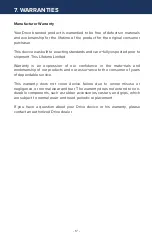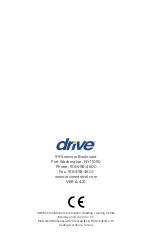
- 4 -
2.3 Shipping and Storage
D
RIVE chairs should be shipped and stored in an upright position and not
stacked higher than 4 boxes. No other materials should be shipped or
stored on top of a DRIVE box. Upon receipt, the shipping carton must be
immediately examined for damage. Any damage should be noted on the
delivery receipt and a request for inspection by the transportation company
should be made. Next, the shipping carton should be opened and the chair
must be examined for concealed shipping damage. If the chair appears to
be damaged, do not use the chair. File a concealed damage report with the
transportation company.
D
RIVE chairs should be shipped and stored at temperatures between
-20ºC and 40ºC. DRIVE chairs should not be used until they are between
0ºC and 30ºC. 5
2.4 Pre-Service Check
DRIVE chairs are delivered with the back rest ready to be easily installed.
Visually inspect the chair for damage, missing parts, and loose fasteners
prior to testing the chair’s functions. Functional testing must be successfully
completed after visual inspection and before use. These obligations apply
to the chair’s first use and to all subsequent uses (Section 4: Inspection and
Functional Testing).
2.5 Hazards
2.5.1 Position of Chair - “Danger of Falling”
A
fter a resident is transferred into a chair, assess the amount of tilt required.
We recommend the chair’s seat be tilted sufficiently to prevent the resident
from sliding or falling forward off the chair. The amount of seat tilt used
should be determined by the resident’s caregiver who is responsible for
seating.
W
e recommend the resident’s feet be correctly positioned on the footrests
and slightly to fully elevated to prevent the resident from sliding or falling
forward off the chair. The amount of elevation used should be determined
by the resident’s caregiver who is responsible for seating.
2.5.2 Position of Seat Tilt - “Danger of Tipping”
W
e recommend the chair’s seat be tilted sufficiently to prevent an agitated
resident from tipping the chair forward or backward, or from slumping and
sliding in the chair. The amount of seat tilt used should be determined by
the resident’s caregiver who is responsible for seating. Always ensure the
resident is properly positioned before operating the seat tilt.
2. SAFETY REQUIREMENTS



